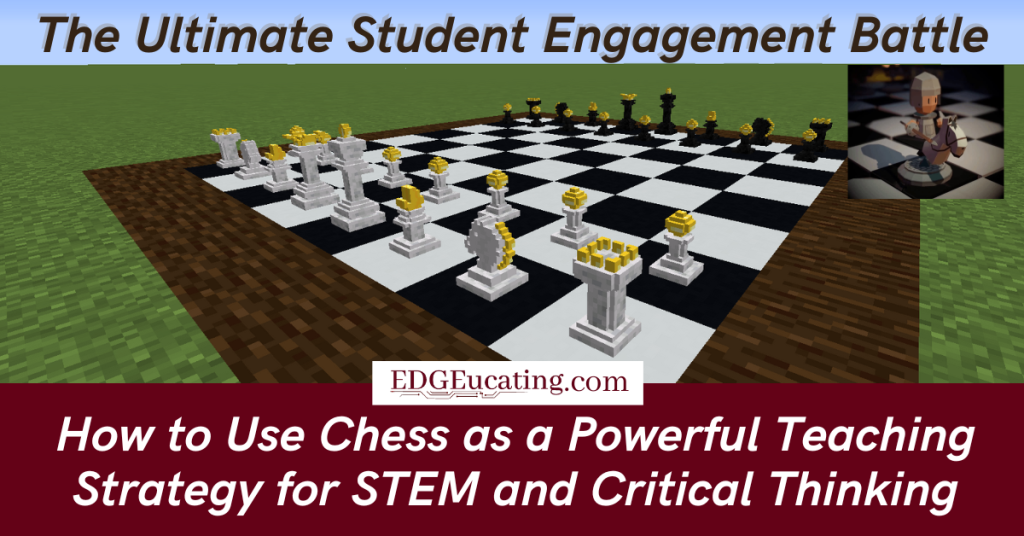As a classroom teacher, I’m always exploring practical yet cutting-edge resources for education that spark curiosity, build essential skills, and keep my students engaged. One tool that continues to stand out is Kai’s Clan. Initially, we had an idea to create a national event – The Global Chess Challenge- that never became a reality. While our idea for a Global Chess Challenge never officially launched, the idea behind it highlighted a powerful way that teachers can integrate chess, robotics, coding, and virtual learning into their classrooms.
Teachers can use Kai’s Clan to play chess in ways that foster STEM education, computational thinking, and critical thinking for kids. By blending the physical and virtual worlds, Kai’s Clan transforms chess into a collaborative, inquiry-driven experience that enhances both engagement and learning.
Why Chess with Kai’s Clan?
Chess has always been more than just a game. It builds skills in logic, analysis, creativity, and problem-solving. When I introduced the Kai’s Clan robotic kit into my classroom, chess suddenly evolved into a highly engaging activity that blended robotics, coding, and problem-solving. My students quickly realized it was more than just a game—it was a way to connect their learning to real-world skills. This interactive classroom activity ramped up learning by integrating:
- Coding for kids — Students can code their chess pieces’ moves and even design animations or responses.
- Inquiry-based learning — Instead of memorizing, students explore strategies, test hypotheses, and adapt in real time.
- Gamified learning — Chess becomes a multiplayer, interactive project that feels like a video game while teaching advanced skills.
- Augmented reality — With Kai’s AR features, students can see their chess pieces come alive in a virtual 3D world.
This blend of physical and virtual play keeps student engagement high while embedding teaching strategies that prepare learners for 21st-century challenges.
How It Works
- The Physical Board: Kai’s Clan includes a special “Create Mat” designed to resemble a chessboard. Students play chess with standard pieces enhanced by QR codes or digital tracking.
- The Virtual World: Every move on the physical board is mirrored in a 3D virtual environment. Chess avatars can be customized, coded, and even given animations or speech bubbles.
- Collaboration Across Locations: Students don’t need to be in the same room—or even the same school—to play. With Kai’s multiplayer cloud platform, games can connect classrooms globally.
This isn’t just about moving chess pieces. I watched my students design, code, and test strategies—and in the process, they built computational thinking and creative problem-solving skills without even realizing they were doing ‘work.

Teaching Strategies with Kai’s Clan Chess
This new found way of playing chess aligned naturally with my core classroom goals, including:
- STEM integration: Use chess coding projects to connect math, logic, and computer science concepts.
- Critical thinking for kids: Ask students to explain why they made specific moves or coded certain behaviors.
- Project-based learning: Assign teams to design custom avatars or create themed chess challenges that combine coding, art, and storytelling.
- Assessment & Reflection: Teachers can assess student understanding of concepts like algorithms, patterns, and strategic planning.
By embedding chess into classroom activities, teachers can enrich traditional instruction with a fun, collaborative, and skills-driven approach.
Student Engagement Through Gamified Learning
Kai’s Clan takes the gamified learning approach further than a traditional chess club. Students work in teams, coding avatars, setting up strategies, and facing real-time challenges that push them to adapt. This fosters teamwork, communication, and resilience.
The first time my students saw their chess pieces move in both the real and virtual worlds, the room lit up with excitement. Even students who don’t usually connect with traditional instruction were leaning in, strategizing, and working as a team.
Augmented Reality and Creativity
One of the most exciting features of Kai’s Clan chess is its augmented reality integration. Students can:
- Build avatars that represent chess pieces in 3D.
- Add sound effects, animations, or even speech bubbles.
- Create themed chess sets that tie into history, literature, or STEM projects.
This level of customization unleashes creativity and connects chess to broader curriculum areas. For more on Augmented Reality in the classroom, check out these blog articles:
Final Thoughts
While the Global Chess Challenge never officially took off, the concept opened the door to powerful ways of teaching through chess and technology. Kai’s Clan allows teachers to transform chess into an interactive classroom project that blends STEM education, coding for kids, inquiry-based learning, and augmented reality.
After putting this idea into motion in my own classroom and the classrooms of my fellow teachers, I know what a success it is for both students and teachers.
At EDGEucating, we see this as more than a game—it’s a teaching strategy that promotes computational thinking, creativity, and collaboration. I’ve seen firsthand how it prepares students to succeed in a constantly changing world.



